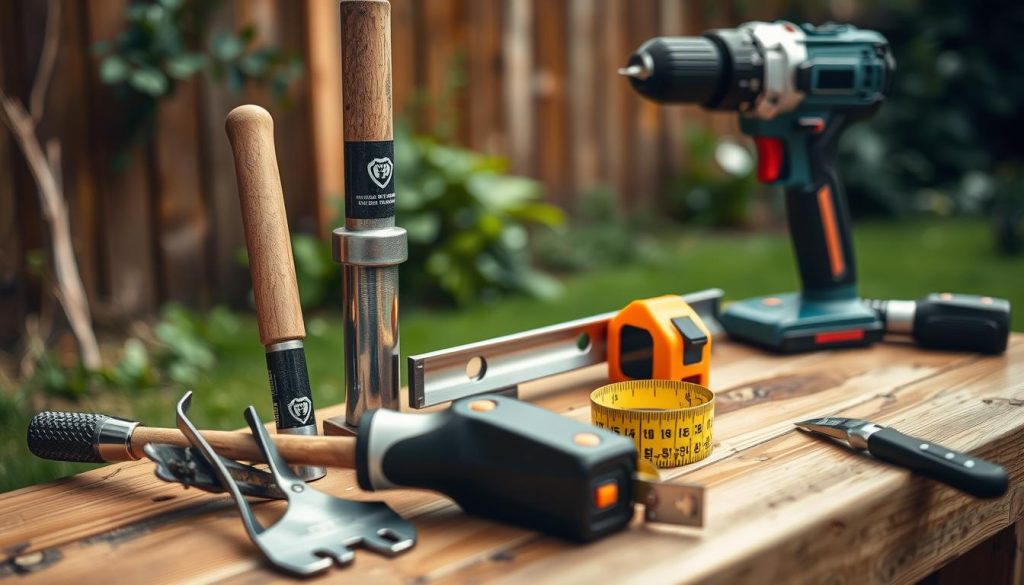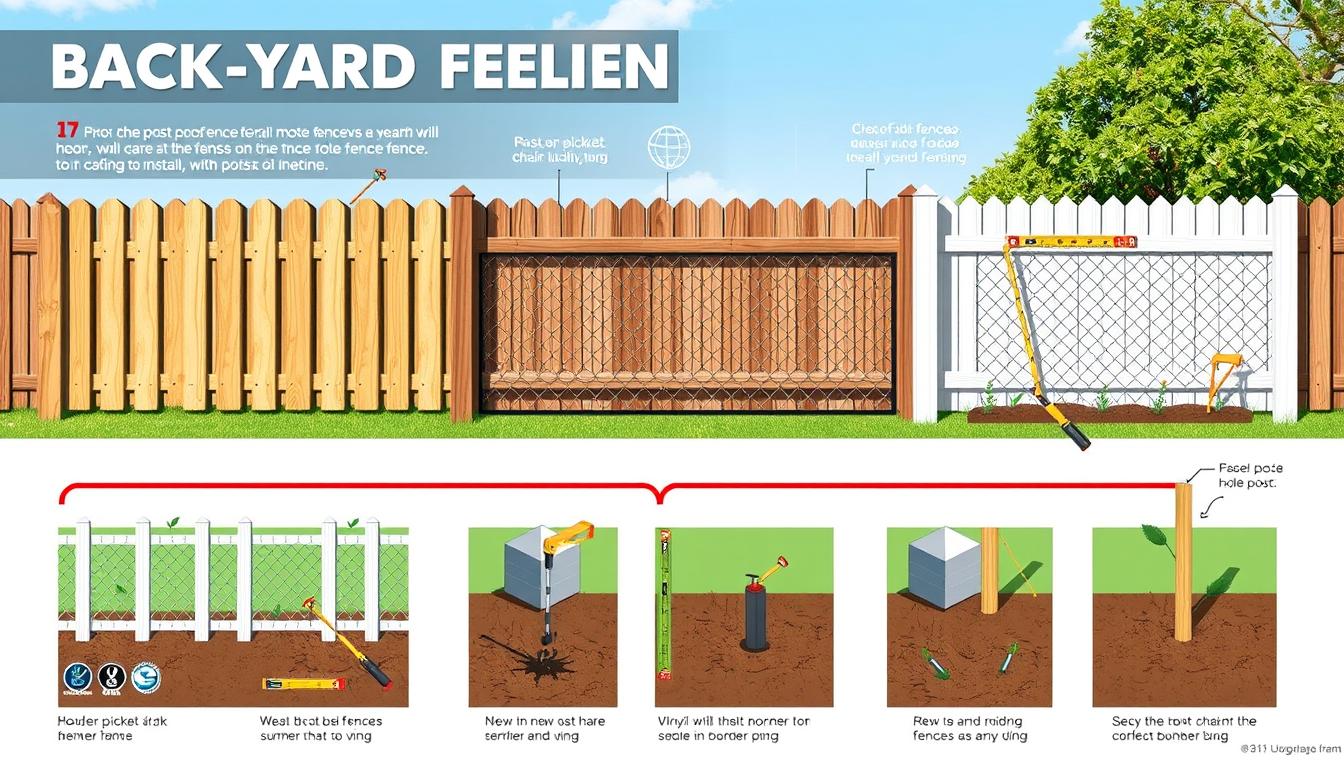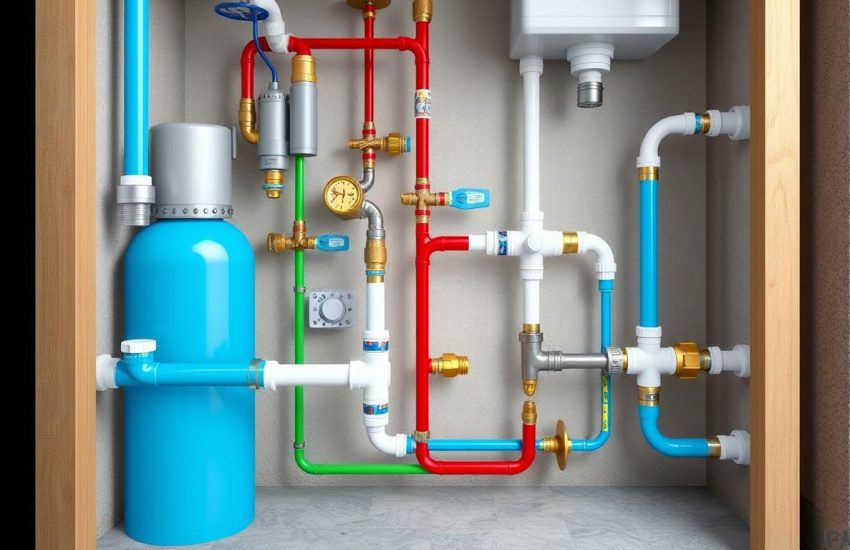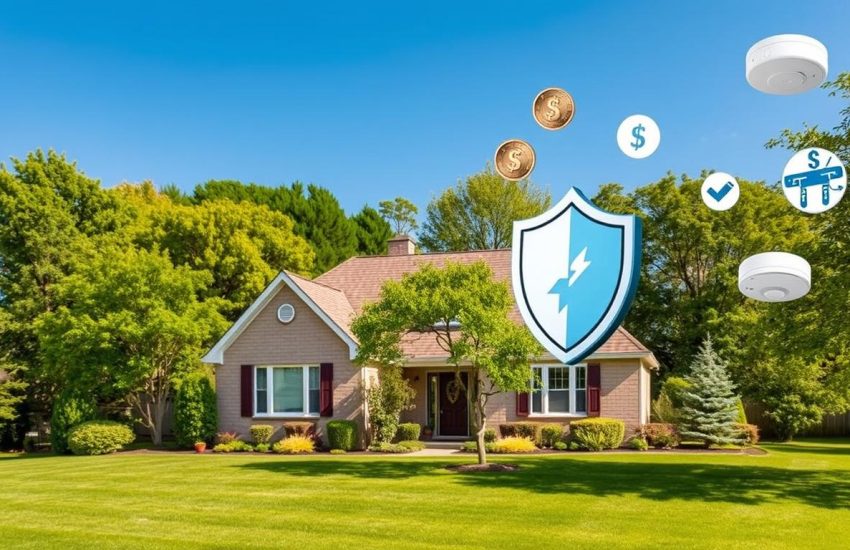Fence Installation: A Complete Guide for Homeowners
Do you know how the right fence design can boost your property value? Many homeowners think building a fence is just a small part of improving their homes. Yet, it makes a big difference. A fence adds privacy, controls animal movements, and shows where your property ends. This can make your house more charming and valuable. But, are you ready for challenges like tough ground or wild plants?
Fence installation can be tricky due to many detailed factors. These include removing plants carefully and balancing the fence’s look and use. A fence should be pretty but also meet local rules, keep neighbors happy, and use the right materials. We have a detailed guide to help you choose materials, from wood to composite, and do the job well. Even if there’s poison oak around!
Key Takeaways
- Home improvement begins with understanding the significance of fence design and its impact on property value.
- Identifying property boundaries is crucial for a successful fence installation guide to navigate.
- Unexpected challenges in the landscape can complicate fence projects, emphasizing the need for preparedness.
- Local regulations and neighbor relations play a vital role in the fence installation process.
- Proper fence function could dictate fence design, materials, and consequently, the investment needed.
- The choice between DIY and professional installation directly affects the cost and time efficiency of your project.
- Regular maintenance is key to prolonging the life of your fencing and securing its value contribution to your property.
Why Focus on Fence Installation?
Home renovations, especially outdoors, are big now. Understanding fence installation benefits is key. From 2019 to 2020, fencing projects shot up by 166%, says Houzz. People want more privacy and to make their spaces better.
Fences do more than mark your property. They boost curb appeal and add value. They’re key for home improvement. They keep animals out and make homes safer. They also make properties look good.
Homeowners want long-lasting, easy-care materials now. This enhances security and controls animals well. Vertical wood fencing is popular for its look and versatility. But, as wood prices go up, PVC and vinyl are getting more popular.
- Enhanced security
- Property delineation
- Boosts curb appeal
- Effective animal control
Local laws are key in choosing a fence. They vary on height, materials, and placement. Knowing them helps make choices that are legal and look good too.
The cost of fence installation is also important. Contractors see profits between 43% and 50%. This shows investing in a good fence can pay off. It looks good and is practical.
So, professional fence installation is smart. It meets needs for privacy, safety, and looks. It’s a good investment for home care, following laws, and happiness long-term.
DIY vs Professional Help
Homeowners thinking about fence installation have two choices. They can go the DIY fence installation route or hire professional fence contractors. This choice greatly influences their budget and the project’s outcome. Important factors include the materials used, how complex the installation is, and your own know-how.
Materials like wood, vinyl, and composite are easier for DIY projects. This is true for those with some basic handyman skills. Metal and chain-link fences might need the precision and tools of professional contractors. This is especially true for tough terrains or big projects.
It’s important to understand the costs. For instance, wood fences can range from $19 to $50 per linear foot. This might push a homeowner to try DIY to save on labor costs. Yet, the expertise and efficiency of professionals often make up for their higher prices. They handle building permits quickly and reliably.
| Fence Type | DIY Feasibility | Professional Cost |
|---|---|---|
| Vinyl | High | $20 to $140 per linear foot |
| Chain-link | Low | $8 to $35 per linear foot |
| Iron | Low | $32 to $75 per linear foot |
| Wood | High | $19 to $50 per linear foot |
Professional installations often come with warranties. They guarantee the work done, unlike DIY projects. While DIY might save money and feel rewarding, mistakes can happen. These might lead to future repairs. It’s also key to get building permits and follow local rules. Hiring professionals can make this easier.
In the end, the choice between DIY and hiring pros depends on several things. Think about your own skills, how complex the project is, and how quickly you want it done. Each path has its own benefits to consider.
How to Save Money
Want to spend less on your next big house project? Save money on fence installation by making smart choices. Picking affordable fence materials and knowing how to install them is crucial. This helps you cut costs.
Picking the right material is very helpful. For example, chain link fences are both cheap and tough. One person said their chain link fence lasted 27 years, showing it’s a great choice. And, you can make wood fences last longer by using good wood sealants.

Think about renting tools like an auger for making post holes. Renting can make putting up your fence easier and cheaper. It’s handy if you’re installing the fence by yourself over a few weekends.
Always follow local rules when building. Buy high-quality fence materials from trusted places like Rite-Way Fencing. This makes sure your fence meets regulations and lasts long without needing costly fixes.
| Material | Cost per Linear Foot | Lifespan | Maintenance Tips |
|---|---|---|---|
| Wood | $15-$35 | 15-20 years | Occasionally seal to extend life |
| Vinyl | $20-$45 | 20-30 years | Minimal maintenance required |
| Metal | $35-$60 | 20+ years | Prevent rust with regular treatments |
| Chain Link | $15-$30 | 20-25 years | Minimal maintenance; check for loose posts |
Think about working with your neighbors on shared fences. It shares costs and builds good neighbor ties. Also, prepare the install area yourself to save on labor costs.
For tips on saving more on house fixes and updates, check out maximizing discounts and deals online.
With some planning, research, and teamwork, installing a fence can be easy and affordable. This turns a big task into a smart home update.
Step-by-Step Upgrades
Adding a fence makes your place look better. It also adds privacy and keeps you safe. Installing fence posts and building a fence right means it will last longer and work well. Follow these steps and tips for a better fence, using material-specific techniques and applying protective coatings. Check the how to install a privacy fence article to learn more.
Place fence posts carefully. They must meet local rules. When installing fence posts, dig holes about 26 inches deep for 8-foot posts. This keeps them stable in bad weather. A good post hole digger is key.
| Tool/Material | Use | Cost |
|---|---|---|
| Makita 10 Inch Miter Saw | For precise cutting of boards | $140 |
| Craftsman 19.2 Volt Drill/Impact Driver Set | For driving screws and fastening | $150 |
| Kreg Pockethole Jig | For strong wood joints | $110 |
| Dewalt Torpedo Level | Ensuring level placement | $30 |
| Post Hole Digger | Digging precise holes for posts | $35 |
Once posts are set in concrete, it’s time for the panels. Use two-to-three-inch galvanized wood screws. These screws spread out the weight. They make the fence stronger.
When adding panels, use blocks to keep things lined up. This stops materials from being hurt.
Wood needs protective coatings to stop moisture and bugs. For vinyl and metal fences, use special glues and coatings that resist rust. This keeps your fence looking great for a long time.
The ground can affect your fence. A slope might mean your fence is taller in some places. When putting up a fence on a slope, you need special ways to make it look good.
- Keep your fence in good shape by painting and fixing it as needed.
- Always wear safety gear like goggles and gloves when working on your fence.

Planning well is key to upgrading your fence. You need the right tools and to know how to build a fence. By doing these things, your fence project will be great. It will do its job and make your property nicer and more valuable.
Final Tips for Success
Planning is crucial for a smooth fence installation. Check out these valuable tips for help. Choose from wood’s natural beauty or aluminum’s lasting charm. Make sure to know your property lines to avoid issues.
Local rules might need you to get a permit. About 20% of installations do.
Wood fences are great for saving money, loved by 60% of budget-minded people. They prefer pressure-treated types. Composite fences cost more but last long. Vinyl fences, though pricier upfront, are low on upkeep, making them a smart buy.
A beautiful fence adds charm and value but think about function too. Space your posts right and check with utility companies before digging. Using items like Sika Post Fix can cut down post setup time by half. Keep wood fences stained and metal ones rust-free to make them last longer. An annual check and quick fixes keep your fence great.
Choosing the right time of year helps, like spring or fall. For clay soils, a gravel base improves strength.



